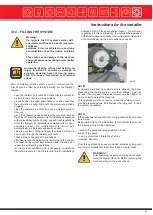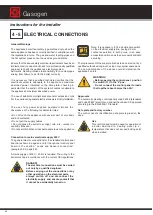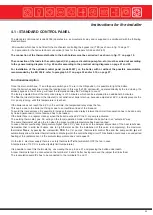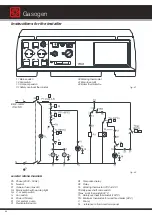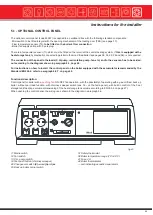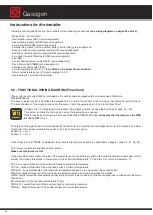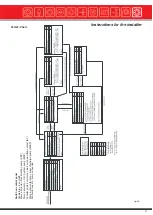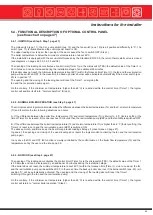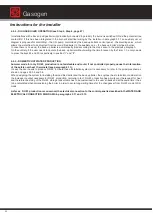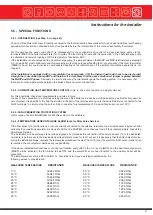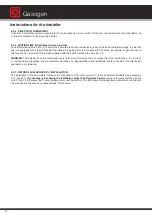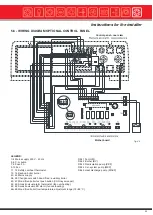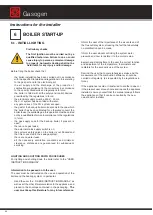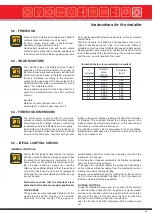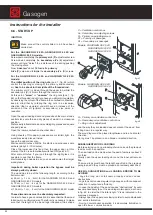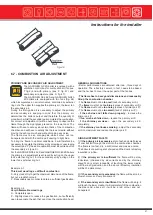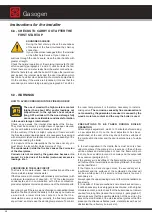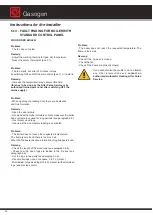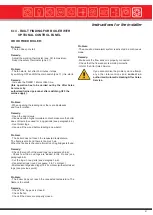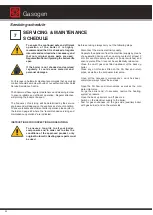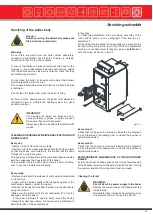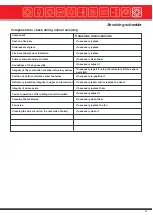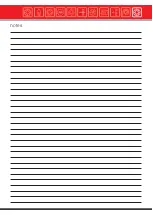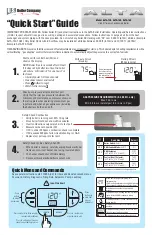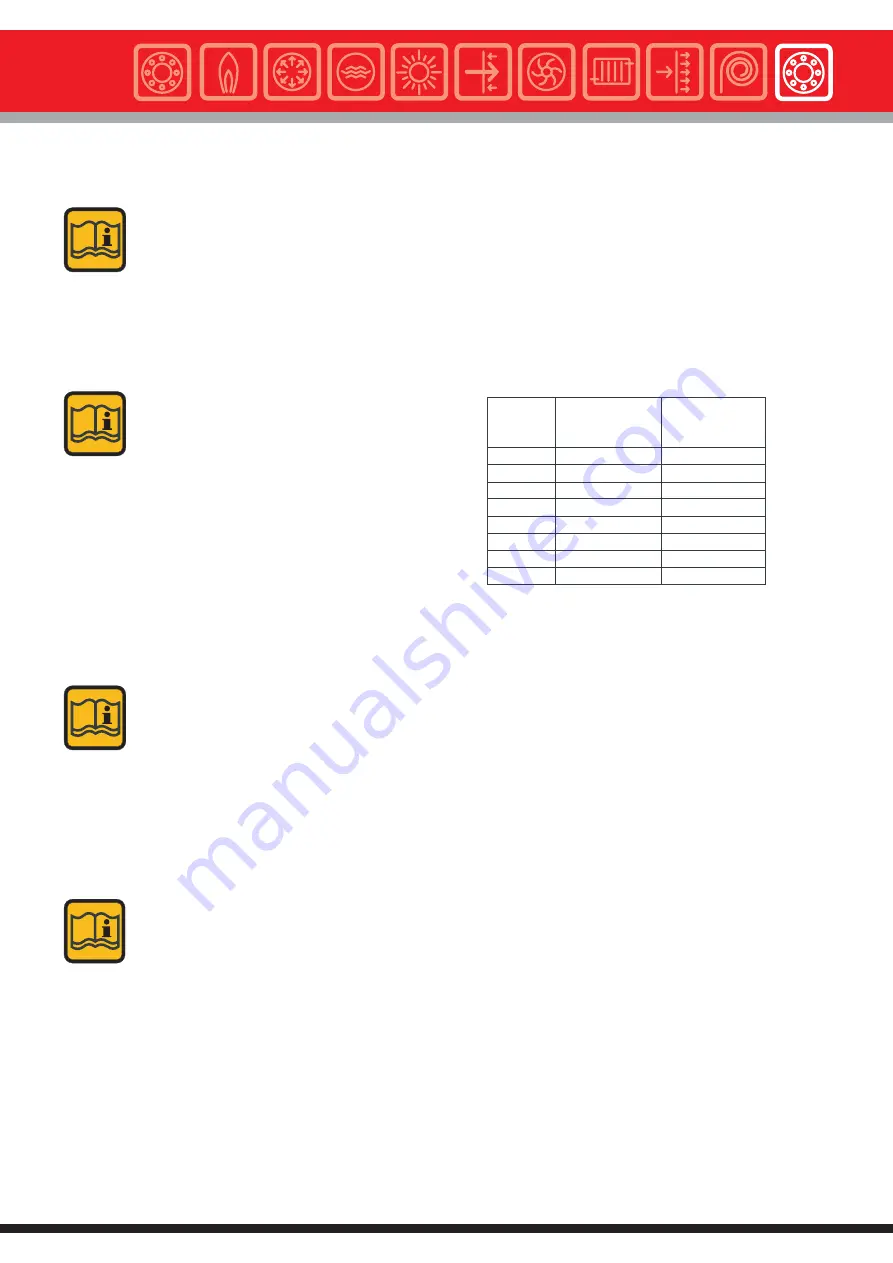
55
Instructions for the installer
6.2 - FIRE WOOD
Wood is formed mainly by cellulose and lignite. It
contains other substances, such as resin
(fir tree - pine), tannin (oak - chestnut) and,
obviously, a large quantity of water.
Good quality woods are oak, ash, beech, maple
and fruit trees, except cherry; medium quality wood
is: chestnut and birch; sufficient quality wood: lime
tree, poplar and willow. Resinous trees are, normally, medium
quality fuels.
Wood is therefore an extremely heterogeneous fuel, due to
different essences (beech, oak, fruit, resinous), different
moisture content, and due to different shapes and dimensions.
Boiler operation will of course be certainly effected by all these
factors. Especially by the log dimensions, the moisture content
and the way wood is loaded in the boiler.
6.3 - WOOD MOISTURE
The calorific value of the different types of wood
depends on their moisture content, as shown on
the table. Boiler output and autonomy will diminish
as the moisture increases. In the table a reduction
factor is indicated according to the moisture
content of the wood used. The heat output of the
GASOGEN G3 2S boiler is calculated for wood
with a 15% moisture content.
As an example wood which has been dried for 2
years air in a protected area has a 25% moisture
content.
Example:
Moisture content of wood used = 30%
Heat output = nominal heat output x 0,79
Correction factors for wood moisture content
%
moisture
Calorific
value
kcal/kg
Correction
factor
15
20
25
30
35
40
45
50
3.490
3.250
3.010
2.780
2.540
2.300
2.060
1.820
1
0,93
0,86
0,79
0,72
0,65
0,59
0,52
6.4 - FIRE WOOD DIMENSIONS
The dimensions, together with the moisture
content, contribute to determine the boiler’s output
Small pieces (with a length, however, conforming
to indications hereby indicated) are more easily
inflammable and therefore have the tendency to
increase the boiler’s output and therefore to reduce
its autonomy. Moreover, they fall with greater
facility, in the lower chamber, reducing the risk of the formation
of “bridges”. The so-called “bridge” is an empty space in the
firebox, where unburnt wood logs remain . In this case the bed
of embers is not fed with continuity and
the refractory burner’s slot is uncovered. In these conditions,
preferential air passages are created with a very small flame
due to an excess of air.
6.5 – INITIAL LIGHTING CHECKS
GENERAL CONTROLS
During the first ignition check that the C.H. system
has been properly filled and properly purged, that
the safety heat exchanger is connected to the
water mains via the heat safety discharge valve
(fig. 10, page 16 and fig. 18 page 19) – that the
chimney has a sufficient draught, that the electrical
connection has been made correctly (paragraph
4 &5) and that the recirculation and boiler pumps
are not blocked.
Furthermore check that the stainless steel
grate and the fire bars are properly positioned.
THE BY-PASS
The by-pass is a direct passage between the fire
wood storage and the chimney. It is normally
closed by a mobile shutter. The by-pass is
automatically opened or closed via a pushing rod when the
loading door is opened.
In this way the smoke accumulated in the firebox is aspirated
and sent to the chimney directly.
The bypass, in conclusion, allows the smoke to be discharged
at the chimney without escaping from the loading door when
loading the wood or during lighting.
Any way it is essential to open the loading door slowly and, as
well, to rotate the antismoke flap (pos. 4, fig. 2) gradually so
that the smoke is effectively aspirated.
BY-PASS CONTROL
During the installation stage and, in any case, before starting
to use the boiler, check that the by-pass is correctly closed
and the correct position of the microswitch, which controls the
opening of the door. In this way when the door is closed the
fan has to start rotating; when the door starts to
open the fan has to be OFF, otherwise all the smokes comes
out.
Summary of Contents for Gasogen
Page 1: ...Wood Fired Boiler Gasogen 29 93kW Installation and Servicing Manual ...
Page 66: ...Gasogen notes ...
Page 67: ...notes ...

